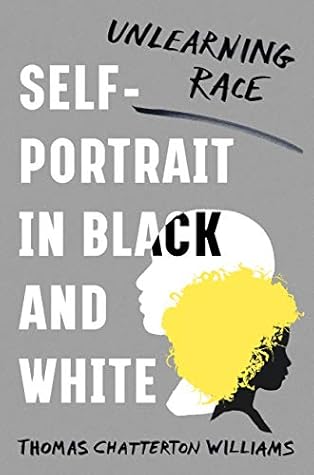More on this book
Community
Kindle Notes & Highlights
Read between
January 17 - January 19, 2020
It was necessary to hold on to the things that mattered. The dead man mattered, the new life mattered; blackness and whiteness did not matter; to believe that they did was to acquiesce in one’s own destruction. —JAMES BALDWIN, NOTES OF A NATIVE SON
I am old enough to understand why even many blacks still wax nostalgic for segregated days: there is safety and comfort in easy unity and acceptance, even when that unity is organized around artificial and sometimes contradictory lines.
“But any fool can see that the white people are not really white, and that black people are not black,” the writer Albert Murray was fond of pointing out. It’s an observation so basic and obviously true that it’s almost impossible to take seriously, like insisting that the sun does not, in fact, rise or set. But what does it say about us that the most common means we have to describe ourselves rely on categories that do not and cannot manifest on human flesh?
John Locke observed that categories “are made by the mind and not by nature”; how indeed can you learn to look at yourself in the mirror and actually see what’s there without the background noise of prejudice and myth?
In color theory, there is no such thing as white—it exists solely in our perception of the world, not as a color per se but as the absence of such. In real life, too, the lived experience of “whiteness” is often construed as the absence of racial identity. It is the neutral starting point from which all else constitutes a deviation.
I will no longer enter into the all-American skin game that demands you select a box and define yourself by it. And it is a game, not in the sense of entertainment but in the sense of game theory—a veritable prisoner’s dilemma in which we are all trapped though highly unlikely to escape, since self-interest mixed with ignorance of each other’s intentions practically ensures we make the wrong decision.
The truth is that ideas matter. Our language, formal and informal alike, shapes our reality. The terminology we use and accept to be used matters. The images we make and allow to be made of ourselves matter, as do the narratives we recite in order to tell ourselves, and each other, who we are, where we come from, and where we think we are going. If we really want to repair what is wrong in our society, it is going to require not just new policies or even new behaviors, but nothing less heroic than new ideas.
There are few things more American than falling back on the language of race when what we’re really talking about is class—or, more accurately still, manners, values, and taste.
We tend not to think about what is latent or in any way at odds with the idea of ourselves we are conditioned to project.
Virtually all of our most audible voices on race, today more than ever, in establishing identity solely in “the body”—no matter in how positive, persuasive, or righteously indignant a light—actually reinforce the same racist habits of thought they claim to wish to defeat.
We can simultaneously resist bigotry and imagine a society that has outgrown the identities it preys on.
We’ve been thrust into a “world profoundly fissured by nationality, ethnicity, race, class, and gender,” the scholar Henry Louis Gates, Jr., who happens to be black, has written. “And the only way to transcend those divisions—to forge, for once, a civic culture that respects both differences and commonalities—is through education that seeks to comprehend the diversity of human culture.”
Which is simply to say, any human being properly motivated and educated is capable of outgrowing the bounds and divisions of identity, of touching the universal.
Heidegger wrote of thrownness, the arbitrary aspect underpinning all of our lives, regardless of color or culture. We are all connected to a chain of past actions and social relations at once unchosen but in his view also not entirely deterministic of the future.
Whether or not race exists, racism does, as does racial inequality.
the Fields sisters argue that racism creates race,‡‡ and not the other way around, while noting that despite our willingness as a society to speak out against racism, we nonetheless take the concept of race as an implacable given, and in so doing only perpetuate the problem.
In coining the term “racecraft,” they draw an analogy between the existence of human races and the existence of spirits and witches. Witches do not exist, they point out, but in many societies from colonial America to pre-Enlightenment Europe to parts of present-day Africa, real flesh-and-blood human women have been tried and killed for being just that.
Real dignity, as he saw it, the kind that can never be stripped from you because only you have the power to bestow it upon yourself, comes from accepting and playing the hand you are dealt as best you can. It also comes from understanding and accepting that no one else has a perfect hand, whatever the appearances.
The nature of the vast and old—but not nearly eternal—racial injury visited upon all of us, because it does harm us all, but visited with special vehemence upon blacks as a group is inherently an injustice. Let us acknowledge this, let us grieve about it when we need to, but above all let us earnestly search for and find ways to fix it. I can think of no better start than rejecting the very logic that created and perpetuates the injury in the first place.


